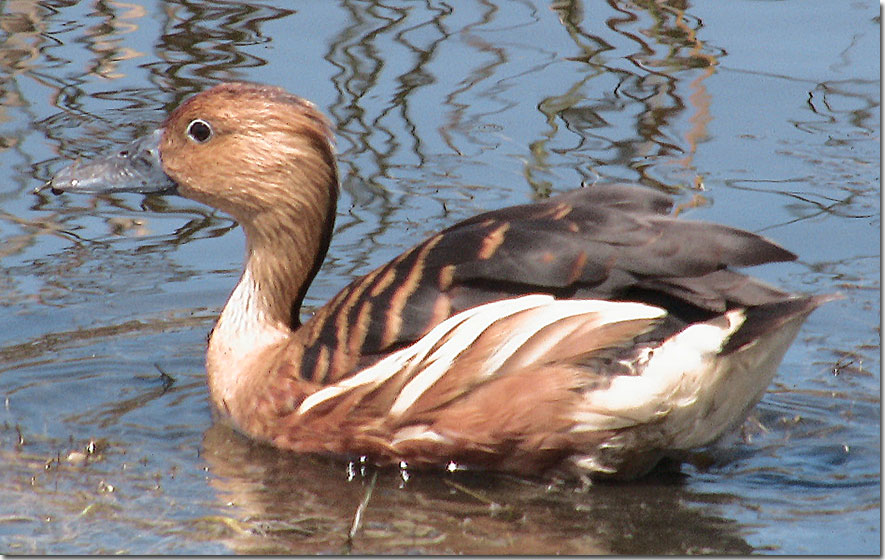With a distribution extending to several continents, the Fulvous Whistling-Duck is nonetheless limited to a few of the southernmost portions of the U.S. Some of these populations are migratory, with movements taking place at night. Fulvous Whistling-Duck pairs are thought to mate for life.
Much remains to be learned about the breeding ecology of the Fulvous Whistling-Duck. While the breeding season is long and it is expected that failed nests are replaced, this needs confirmation. While year-old birds are capable of breeding, it is likewise not known how frequently they actually do breed.
Distinctive species with long neck. Not easily confused with other species.
On this page
BREEDING MALE
The Fulvous Whistling-Duck is a tall, long-necked duck with a black bill, reddish-brown underparts, a blackish back with tawny-edged feathers, and a dark stripe along the hindneck. Length: 19 in. Wingspan: 26 in.
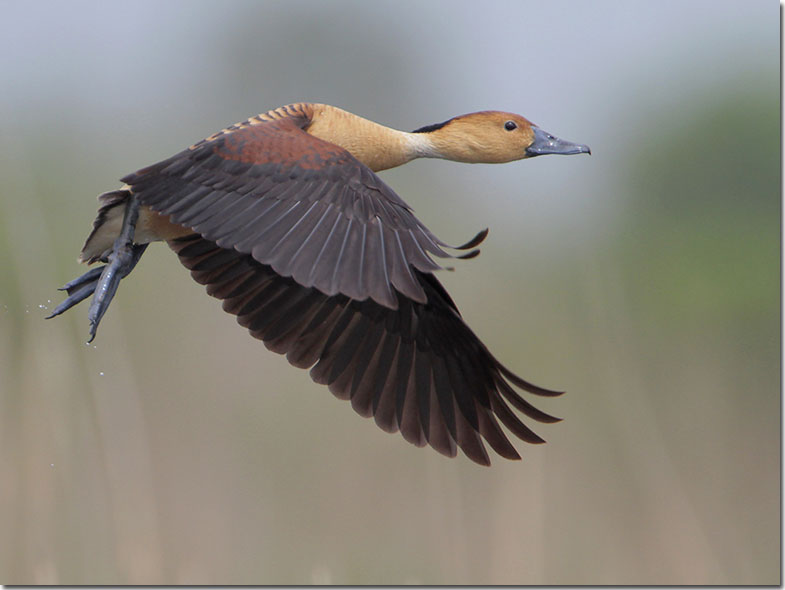
Photograph © Greg Lavaty.
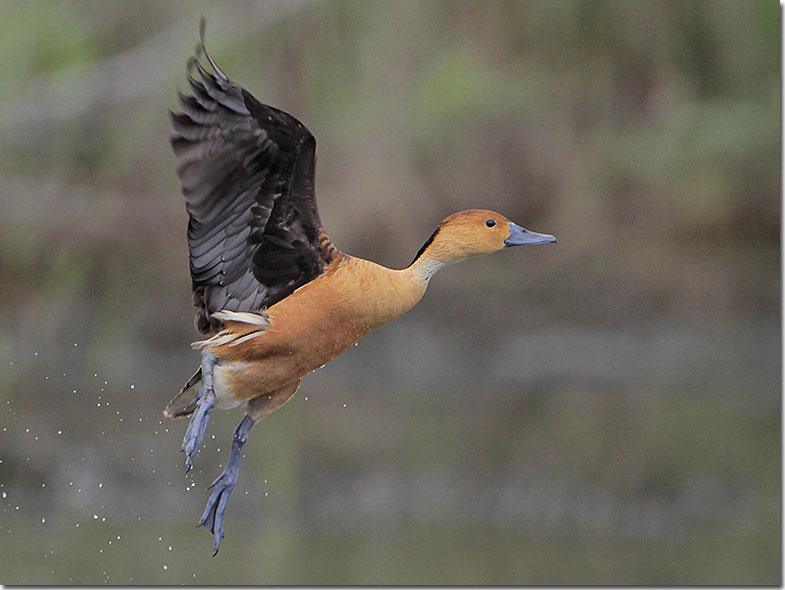
Gray legs. Dark wings. Reddish belly, pale ring on the neck. Photograph © Greg Lavaty

Dark wings with rusty “shoulder.” Dark mark on back of the head/neck. Photograph © Greg Lavaty.
Female
Hindneck stripe usually continuous.
Seasonal change in appearance
None.
Juvenile
Similar to adults but paler.
Habitat
Freshwater marshes.
Diet
Seeds.
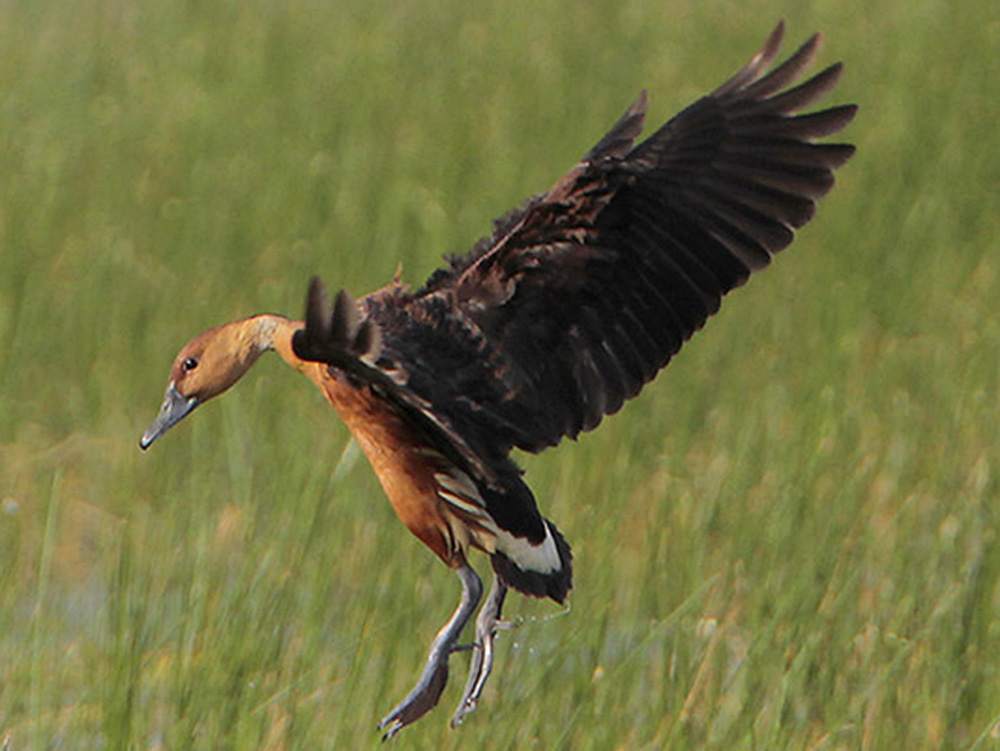
Photograph © Greg Lavaty.
Behavior
Forages by dabbling and occasionally by diving, as well as grazing on land.
Range
Resident in southern Florida and Texas, and a breeder along most of the Texas and Louisiana coastline and very locally in southern California. It is also resident south to South America, and occurs in Africa and Asia.
Fun Facts
Few ducks are as widespread worldwide as Fulvous Whistling-Ducks.
Fulvous Whistling-Ducks are not territorial, and defend only the nest and a small feeding zone.
Vocalizations
A squealing, two-syllable whistle is given.
Similar Species
Unique appearance.
The Black-bellied Whistling-Duck, as the name implies, has a black belly, orange bill and large white wing patch.
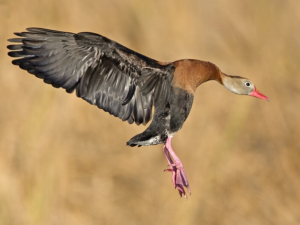
Black-bellied Whistling-Duck. Photograph © Alan Wilson
Nesting
The nest is a bowl of grass and aquatic vegetation placed on the ground.
Number: 12-14.
Color: Whitish.
Incubation and fledging:
– Young hatch at 24-26 days.
– Young fledge (leave the nest) shortly after hatching but remain with the adults for some time.

